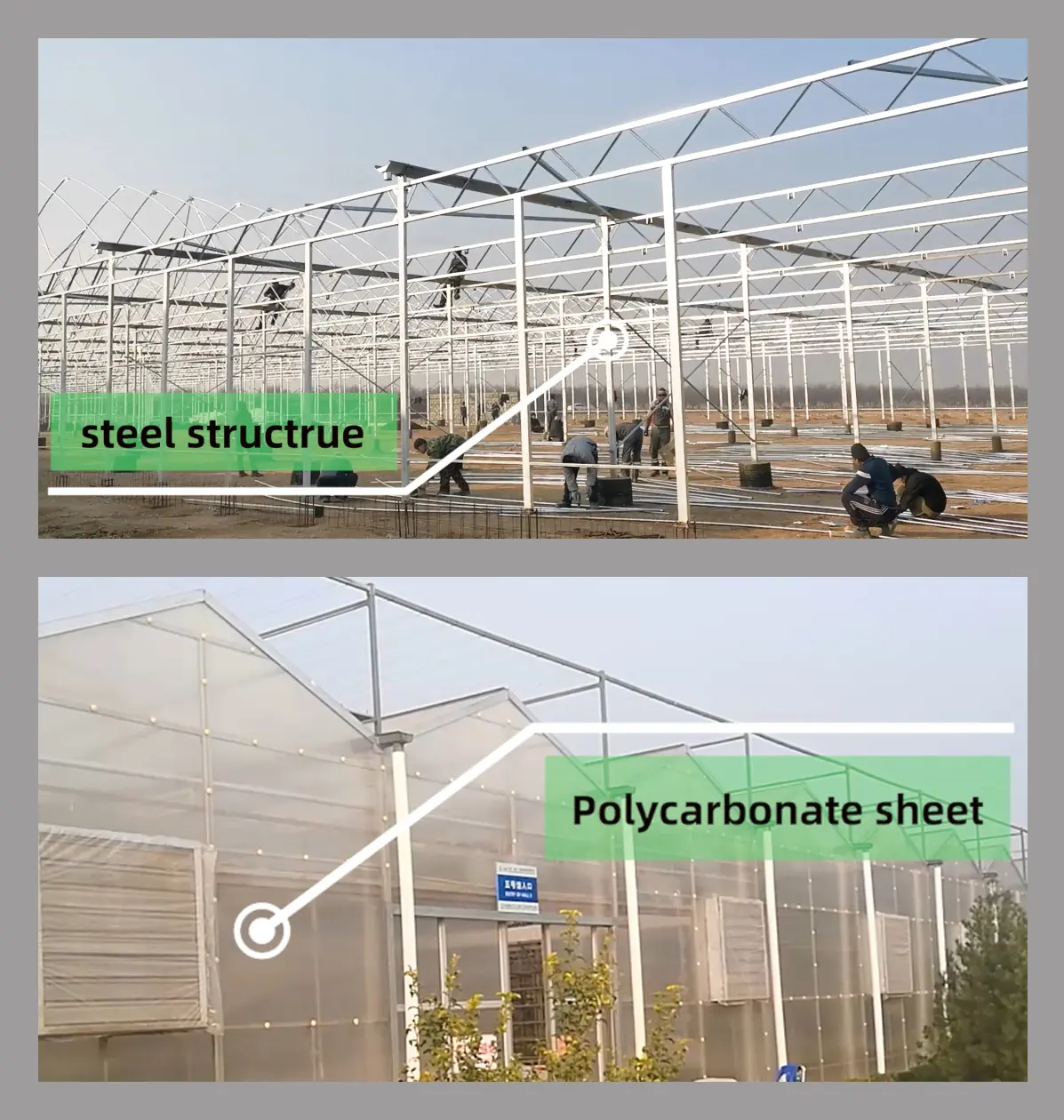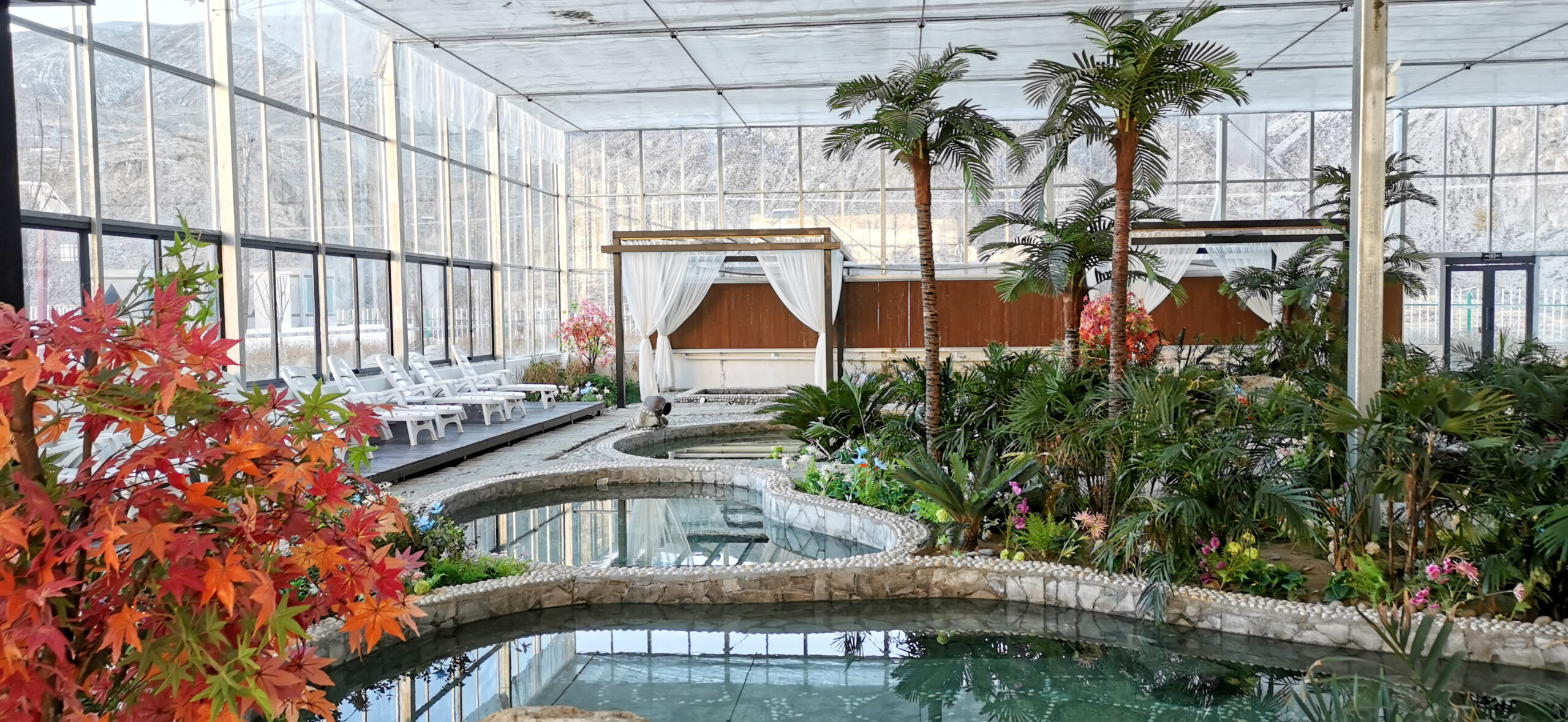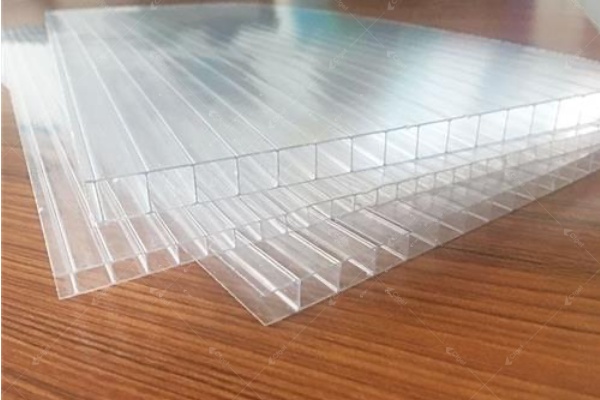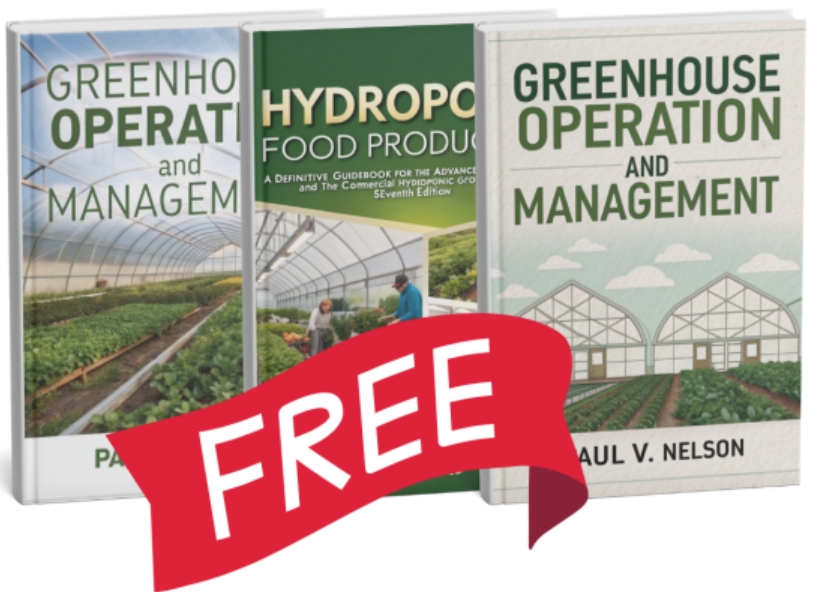Thinking about a smart greenhouse but feel overwhelmed by the process? Worried about making costly mistakes during planning and construction? A clear roadmap makes it achievable.
Building a smart greenhouse involves defining goals, choosing the right system, thoughtful design and construction, integrating technology effectively, and managing the budget. It’s a planned process, not an overnight task.
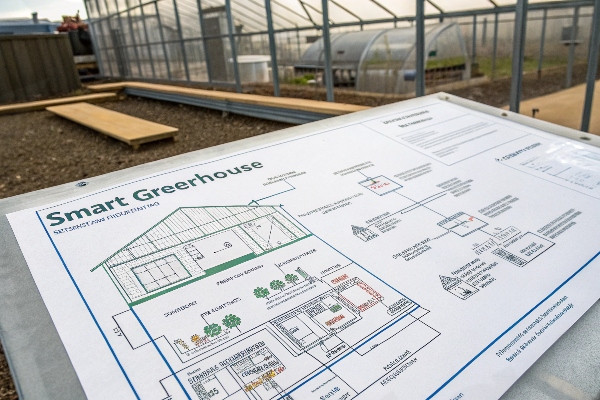
Transitioning to smart agriculture can seem daunting. Businesses need reliable, efficient growing environments. Smart greenhouses offer this, but where do you start? Having guided clients through this for decades, I know a structured approach is crucial. It begins with understanding what "smart" means for your business – it’s about using technology like sensors and automation to actively control the growing environment. Let’s break down the essential steps to build a successful smart greenhouse operation.
Don’t miss out: ——Everything about intelligent greenhouse systems
Choosing the Right Smart Greenhouse System: What Factors Should You Consider?
Overwhelmed by the variety of smart greenhouse systems and technologies? Fearful of investing in a system that doesn’t fit your specific needs? Focusing on key factors clarifies your choice.
Consider your specific growing goals, budget constraints, crop requirements, desired level of automation, scalability for the future, system integration capabilities, and the reliability of vendor support when selecting a system.
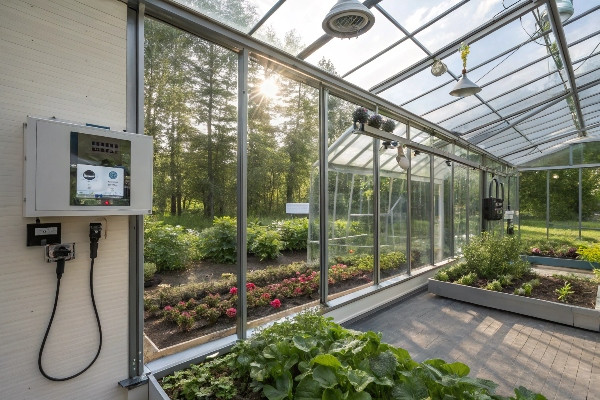
Selecting the right system is foundational. It’s not a one-size-fits-all decision. Think about what you really need the technology to achieve. Are you aiming for maximum yield, specific quality standards for high-value crops, or perhaps conducting research that requires precise environmental control? Your primary goals will heavily influence the type and complexity of the system required. Your budget is obviously a major factor, encompassing not just the initial purchase price but also installation costs, ongoing maintenance, and potential subscription fees for software or cloud services. Different crops have vastly different needs regarding temperature, humidity, light, and nutrients; the system must be capable of meeting these specific demands. Consider how much automation you truly need versus what can still be managed manually or with simpler controls. Scalability is vital – can the system grow with your business? Ensure the components (sensors, controllers, software) are compatible and can potentially integrate with other farm management tools you might use. Finally, reliable vendor support is critical. At CFGET, we understand that ongoing technical assistance and expertise are just as important as the initial hardware. You need a partner who understands the technology and your agricultural context.
| Factor | Key Questions to Ask | Why It Matters |
|---|---|---|
| Growing Goals | What are you trying to achieve (yield, quality, consistency, research)? What are your key performance indicators? | Determines the necessary level of precision and control. |
| Budget | What is your total budget (initial + operational)? What is the expected ROI timeframe? | Dictates the feasible level of technology and complexity. |
| Crop Needs | What specific environmental conditions does your crop require? Are there different needs for different growth stages? | Ensures the system can create and maintain the optimal growing environment. |
| Automation Level | Which processes do you want to automate (climate, irrigation, lighting)? What level of manual oversight is acceptable? | Balances investment cost with labor savings and control precision. |
| Scalability | Do you plan to expand in the future? Can the system be easily upgraded or expanded? | Avoids needing to replace the entire system if your operation grows. |
| Integration | Will this system work with other technologies you use or plan to use? Is the software interface user-friendly? | Ensures seamless operation and avoids data silos. |
| Vendor Support | What level of technical support, training, and warranty does the vendor offer? Do they have proven experience? | Provides peace of mind and ensures help is available when needed. CFGET prides itself on this. |
Smart Greenhouse Design and Construction: What Are Best Practices for Optimal Results?
Worried that poor greenhouse design will undermine your smart technology investment? Concerned about structural integrity or inefficient layouts hindering operations? Following best practices prevents costly problems.
Best practices include careful site selection, ensuring structural strength for your climate, choosing appropriate covering materials, planning an efficient internal layout, strategic sensor placement, and designing for system integration from the start.
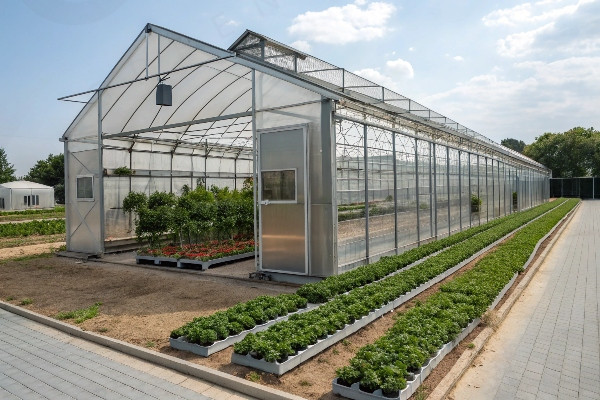
A smart greenhouse is only as good as its physical structure and design. Integrating technology effectively requires planning from the ground up. Site selection is paramount – you need good sunlight exposure (unless specific shading is planned), proper drainage to avoid waterlogging, shelter from extreme winds if possible, and access to necessary utilities like water and power. The structure itself must be robust enough to handle local weather conditions – snow load, wind resistance, etc. This is crucial, especially for clients in areas like Central Asia with extreme climates. Material choice for the frame (steel, aluminum) and covering (polycarbonate, specific PE films) impacts durability, insulation, and light transmission – link this back to the specific needs identified earlier. The internal layout should facilitate efficient workflow, allow for good air circulation (essential for climate control), and potentially enable zoning for different crops or growth stages. Sensor placement is critical for accurate monitoring; sensors should be positioned to get representative readings of the plant environment, avoiding direct sunlight, drafts near vents, or proximity to heating/cooling sources that could skew data. We always emphasize placing sensors at crop level. Equally important is planning the routing for wiring (power, data networks) and plumbing (irrigation, fertigation) for easy access, maintenance, and future expansion. Think about where controllers, pumps, and electrical panels will be housed. Designing with integration in mind ensures sufficient space and appropriate mounting points for all the automated equipment – vents, fans, screens, lights, irrigation systems. A well-designed structure supports and enhances the smart technology within it.
| Best Practice Area | Specific Considerations | Impact on Smart Greenhouse Performance |
|---|---|---|
| Site Selection | Sunlight access, drainage, wind exposure, utility availability (water, power, internet). | Affects energy needs (heating/lighting), risk of damage, ease of operation. |
| Structural Integrity | Frame material (galvanized steel recommended), design load (wind, snow), foundation. | Ensures longevity, safety, and ability to support equipment (screens, lights). |
| Covering Material | Type (PC, PE film), properties (light transmission, diffusion, insulation, UV resistance, anti-drip). | Directly impacts internal climate, energy efficiency, light quality for plants. |
| Internal Layout | Workflow paths, benching/growing system arrangement, airflow patterns, zoning capabilities. | Affects labor efficiency, climate uniformity, ability to manage different crops/stages separately. |
| Sensor Placement | Location relative to plants, vents, heaters, lights; number and distribution of sensors. | Crucial for accurate data collection, which drives all automation decisions. |
| System Integration | Space for equipment, routing for wires/pipes, accessibility for maintenance, network setup. | Facilitates installation, ensures reliable operation, allows for future upgrades. |
| Foundation & Flooring | Concrete slab, gravel, weed matting; ensuring proper levels and drainage. | Provides stability, impacts sanitation, influences heat exchange with the ground. |
Integrating Smart Technology into Your Existing Greenhouse Infrastructure: Is It Possible?
Do you already operate a conventional greenhouse but want to add smart capabilities? Wondering if you can upgrade without a complete rebuild? Retrofitting smart technology is often feasible.
Yes, integrating smart technology into an existing greenhouse is possible. Success depends on assessing the current structure, defining clear automation goals, choosing compatible systems, and often taking a phased implementation approach.
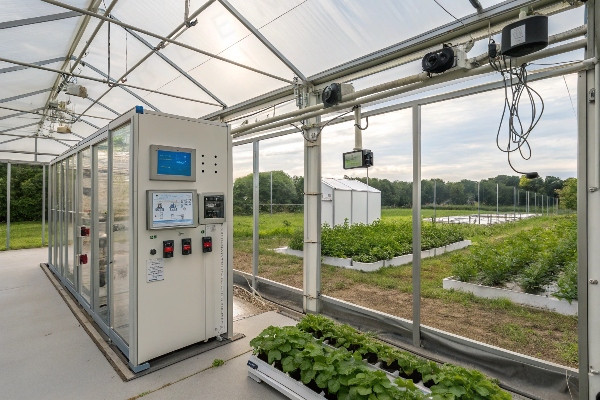
Many growers have substantial investments in their current greenhouses and aren’t looking to start from scratch. The good news is, you can often make your existing structure smarter. The first step is a thorough assessment. Is the structure sound enough to support new equipment like automated vents or screens? Is the electrical system adequate for additional sensors, controllers, and actuators? What’s the existing level of control? Then, define your goals realistically. What are the biggest pain points you want to address? Often, improving climate control1 (temperature and humidity management) or automating irrigation offers the quickest return on investment. You don’t have to automate everything at once. Start with monitoring – installing sensors (inside and perhaps a basic weather station outside) connected to a simple data logger or software platform gives you valuable insights into your current environment. Based on that data, you can prioritize automation. Perhaps adding automated vent control or integrating existing fans with temperature/humidity sensors is the next logical step. Choosing compatible systems is key during retrofitting. Ensure new sensors, controllers, and actuators can communicate effectively, preferably using standard protocols. Look for modular systems that allow you to add components over time. Installation requires careful planning. Running wires and potentially pipes in an existing structure can be more challenging than in a new build. Ensure reliable network connectivity (wired or wireless) reaches all sensor and control points. Software is the glue holding it together; select a platform that can integrate the various components you plan to use. At CFGET, we’ve helped many clients upgrade their facilities, sometimes starting just with improved sensors and basic climate control1lers, then adding more layers of automation as their budget and needs evolve. It’s a practical way to gain smart benefits incrementally.
| Integration Step | Key Activity | Considerations | Outcome |
|---|---|---|---|
| 1. Assess Existing Setup | Evaluate structural integrity, electrical capacity, current equipment, network infrastructure. | Can the structure support new loads? Is power sufficient? Are existing fans/vents suitable for automation? | Understanding limitations and opportunities for upgrades. |
| 2. Define Phased Goals | Prioritize automation needs (e.g., monitoring first, then climate, then irrigation). | What provides the biggest immediate benefit or solves the most pressing problem? What fits the current budget? | A clear, step-by-step roadmap for integration. |
| 3. Select Compatible Tech | Choose sensors, controllers, actuators, and software that can work together. | Check communication protocols (e.g., Modbus, MQTT), power requirements, software compatibility. | A functional, integrated system rather than isolated gadgets. |
| 4. Plan Installation | Map out sensor locations, wiring/piping routes, controller placement. | Minimize disruption to ongoing operations, ensure safe installation, plan for accessibility and maintenance. | Efficient and effective deployment of the new technology. |
| 5. Implement & Test | Install components phase by phase, configure software, test system responses. | Calibrate sensors, set initial control parameters, verify actuator responses, train staff. | A working smart system integrated into the existing greenhouse. |
| 6. Monitor & Optimize | Track performance data, analyze results, adjust settings for optimal efficiency and crop response. | Is the system achieving the desired environmental stability? Are resources being saved? Is yield improving? | Continuous improvement and maximizing the return on investment. |
From 20 sq. m to 2,000 sq. m: Is a Smart Greenhouse Feasible for Your Budget?
Thinking smart greenhouses are only for huge, corporate farms with massive budgets? Assuming the technology is too expensive for your smaller or medium-sized operation? Smart solutions are scalable.
Absolutely. Smart greenhouse technology is highly scalable. Systems can be tailored to fit operations from small research plots (20 sq m) to large commercial farms (2,000+ sq m) and various budgets.
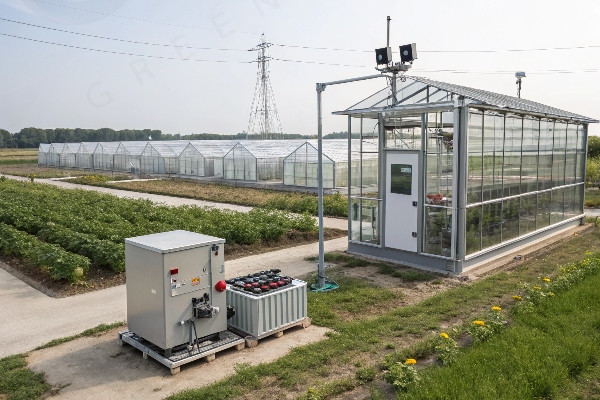
A common misconception is that "smart" automatically means "prohibitively expensive." While complex, fully automated systems for large areas represent a significant investment, the principles of smart control can be applied effectively at almost any scale. The key is tailoring the technology level to the size of the operation and the specific goals. For a small research greenhouse (e.g., 20 sq m), the focus might be on precise data logging and basic climate control. This could involve a few high-quality sensors for temperature, humidity, and light, connected to a simple controller that manages a small ventilation fan and perhaps a heater, possibly with timer-based irrigation. The cost is manageable, and the value comes from accurate data and stable conditions for experiments. For a medium-sized commercial grower (e.g., 200 sq m), the system would likely be more comprehensive. Multiple sensors for better spatial coverage, integrated control of heating, cooling (vents/fans), possibly shade screens, and automated irrigation2 perhaps with basic fertigation (e.g., EC/pH monitoring and adjustment). The investment is larger, but the ROI comes from labor savings, resource efficiency (water, fertilizer, energy), and improved crop consistency. At a large commercial scale (e.g., 2,000 sq m or much larger), you see the full suite: extensive sensor networks (including outdoor weather stations), sophisticated climate control algorithms managing multiple HVAC components, precision fertigation adjusting recipes in real-time, energy-saving strategies like automated thermal screens and LED lighting control, and integration with broader farm management software. The initial cost is high, but the efficiency gains, yield increases, and quality improvements operate on a scale that justifies the investment. Many systems are modular, allowing you to start with essential controls and add more features later as your budget allows or needs evolve. The intelligence level, as we often say, depends on the configuration you choose.
| Greenhouse Scale (Example) | Typical Focus | Example Smart Features | Relative Budget Level | Key Benefit Emphasis |
|---|---|---|---|---|
| Small (e.g., 20 sq m) | Data logging, basic environmental stability | Temperature/humidity sensors, simple controller, basic vent/fan automation, timer irrigation. | Low | Accurate data, consistency |
| Medium (e.g., 200 sq m) | Improved climate control, resource efficiency | More sensors (incl. light/CO2), integrated heating/cooling/ventilation control, automated irrigation + basic fertigation. | Medium | Labor/resource savings |
| Large (e.g., 2,000 sq m) | Full automation, maximum efficiency, precision | Extensive sensors + weather station, advanced climate control, precision fertigation, energy management, data analytics. | High | Yield, quality, efficiency |
| Very Large / Corporate | Integration, optimization, potential robotics | All large-scale features + integration with ERP/logistics, advanced analytics, potential robotic harvesting/scouting. | Very High | Scalability, predictability |
Conclusion
Building a smart greenhouse is a strategic process. By carefully choosing systems, designing effectively, integrating thoughtfully, and budgeting wisely, businesses of all sizes can harness this technology for efficient, year-round growing.
